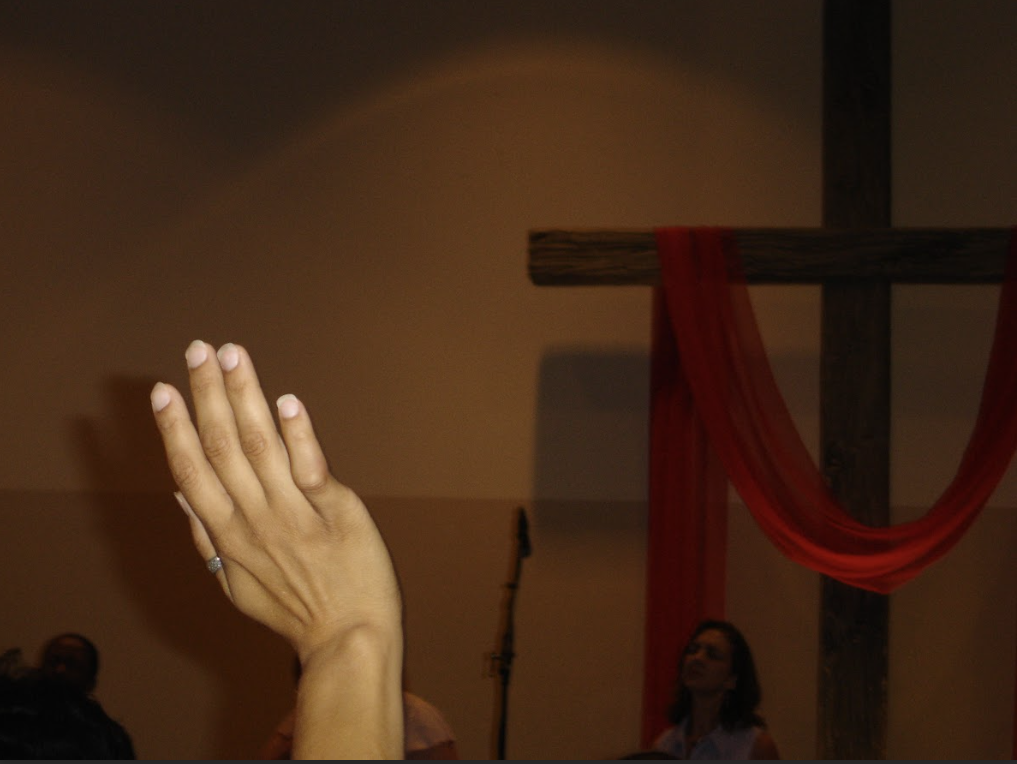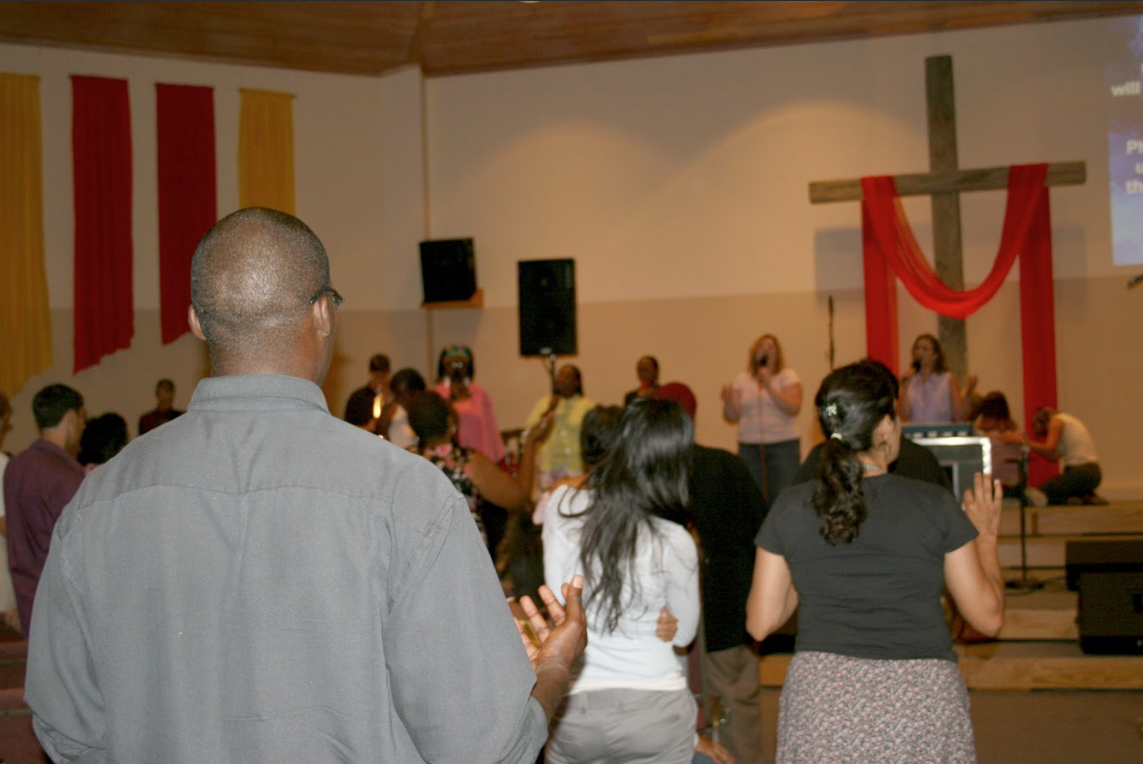Updated May, 2025
Scan the crowd at one of Madison Square Church’s well-attended Sunday services and you’ll see something rare: a group whose demographics actually looks like its diversely-peopled promotional materials.
This church is ethnically, generationally, and socioeconomically diverse. On the surface, the congregation almost makes living as reconciled members of the body of Christ seem effortless. But if you talk to someone on the church’s leadership roster or to one of its long-time members, they will tell you that what they do together as a church is anything but easy.
In fact, Dave Beelen, Madison’s lead pastor since 1984, emphasizes long-suffering and brokenness when he talks about what it has taken to build an authentic, Christ-centered community at his church. He also emphasizes the extent to which the community project at Madison is incomplete.
“We have made lots of mistakes and hurt each other in the process, but God gave us so many people who hung in there and suffered long through the process of growing authentic Christian community. We are always learning,” he said.
Madison Square, located in an urban neighborhood in southeast Grand Rapids, Michigan, is positioned to be a congregation with a strong commitment to diversity and community outreach. The church began nearly a hundred years ago as a storefront gospel mission led by Pastor W. P. VanWijk from Oakdale Park Christian Reformed Church. It wasn’t until 1970, however, that the mission became an organized congregation of the Christian Reformed Church (CRC). Four years later, the church welcomed Rev. Virgil Patterson, the first black minister ordained in the CRC to serve in the Grand Rapids area.
The late 1970s proved to be an important though painful time of identity formation for the newly-established church. Those years saw the resignation of Patterson over racist attitudes in the congregation. The church also was realizing that Madison was called to be a place that welcomed the outcasts of society, a place for those who didn’t “fit” anywhere else. Dr. Dante Venegas, a Puerto Rican from New York City, joined the church staff in 1978 as the minister of evangelism, and several church members dedicated themselves to outreach in the local neighborhood. Madison grew by leaps and bounds in the next few years with a second service, and then a third, added in the 1980s.
Today Madison Square Church is a congregation of about 1,500 active participants, with fourteen full-time staff members and a three-member preaching team that assists Beelen with the ministry of the Word two Sundays each month. They meet in a building purchased from a Presbyterian church in 1979. After a sanctuary addition completed in 1993, the church moved to buy several properties surrounding the main campus for office and educational space.
Now, after several years of prayer regarding the church’s continued growth and the congregation’s desire to increase its outreach capabilities, a new service has been added to the three existing services. Instead of squeezing the service into the already-tight Sunday morning schedule at Madison, the service meets concurrently with the usual 10 a.m. service, but at Gerald R. Ford Elementary School just north of Madison Square.
According to Madison’s communications manager Bill Wiarda, the “Madison@Ford” service is not meant to differ much from the typical Madison service.
“We’re carrying all our DNA there—our core values, our mission, and our focus on diversity—it’s really just a fourth service,” he said.
The new service is meant to make room for anyone and everyone who wants to be a part of the Madison community and to expand the church’s outreach in the neighborhood. Instead of simply treating the new service as a satellite location for overflow, Madison@Ford has its own worship band and a dedicated pastor in the person of Alton Hardy from the church’s preaching team.
“We wanted to continue to offer the personal experience for people, an experience where they feel that everything is there just for them,” said Wiarda.
Beelen admits that it hasn’t always been easy to create a welcoming space at Madison. The church has put a lot of effort into realizing their vision “to build a community of diverse people who are being transformed by Christ.” To Beelen, the late Dante Venegas served as an instrument of God to teach the congregation about how to live together as God’s people.
“He taught us how to be culturally reconciled . . . not just people of different color, but people who truly try to learn from each other and appreciate each other’s differences. He also taught us how not to focus on our differences but on Jesus Christ,” he said.

Steps Toward Reconciliation
Steps toward reconciliation are regularly made in the worship life of the church, as services are designed to welcome a group of worshipers as varied as any under the sun. Where the temptation for many congregations striving for diversity might be to reduce worship to the lowest common denominator, a worship band and preaching rotation system works to make sure that this does not happen at Madison.
With this rotation system in place, a particular worship band might play contemporary praise choruses one week and another worship band might sing a West African song, an African-American spiritual, and a jazz rendition of a modern worship song the next. Likewise in preaching, Beelen might start off a sermon series on relationships one week and have preaching team member Cisco Gonzalez or Joy Bonnema follow him on the same theme the next Sunday.
Madison member Nalini Suganandam helps lead worship in a band that plays on Sunday morning about once a month. She says this system ensures that each member of the congregation will find something to identify with during any given rotation.
Perhaps what Madison does best in worship is welcome and reach out to people while asking them to move beyond themselves to embrace Jesus Christ and their neighbor.
“People come to worship and will light up if they identify with the worship leader or the particular worship style that Sunday. Whether there’s emphasis on dancing or silence or something else, different parts of the congregation come alive,” she said.
This means, of course, that worshipers may not always appreciate a particular worship or preaching style. According to Wiarda, this is OK.
“If you’re not uncomfortable at some point during our service, we’re doing something wrong. It’s connected to trying to make people feel welcome—what makes one person feel uncomfortable makes another feel at home,” he said.

A Pattern for Worship
Perhaps what Madison does best in worship is welcome and reach out to people while asking them to move beyond themselves to embrace Jesus Christ and their neighbor. This inward and outward movement is enacted in the liturgical model that is formally called “the Tabernacle Progression.” It patterns every worship service at Madison and is the common thread that ties together all the worship traditions represented there.
The progression is derived from a reading of Exodus 25-40 and Hebrews 8-10. It takes the physical structure of the tabernacle built by the Israelites in the desert, along with redemption-
focused tabernacle imagery used in the New Testament passage, and creates a structure for worship that allows a person to be led by the Holy Spirit to an increasing awareness of God’s holy presence. In worship the Tabernacle Progression goes like this:
- Worship begins with a time of gathering, much like the Israelites gathered from their tribes at the tabernacle to worship God.
- It then moves into the “outer courts” of the tabernacle where sacrifices were once made; at this point in the worship service there are songs or other prayers of confession and thanksgiving for Christ’s sacrifice.
- In the “inner courts” of the tabernacle, worshipers sing songs to God with an air of reverence and increasing intimacy.
-
Finally, in the “holy of holies,” God’s presence is further revealed through the mediating sacrifice of Christ; quiet, contemplative songs will likely be sung and worshipers might be invited to kneel or come forward to pray.
Perhaps what Madison does best in worship is welcome and reach out to people while asking them to move beyond themselves to embrace Jesus Christ and their neighbor.
This pattern of worship, grounded in an ancient tradition, somehow touches people of many different backgrounds. What it’s really trying to do, with a variety of songs, dramatic readings, and preaching styles, is teach people to worship.
“It’s not really about singing a song in a different language,” Suganandam said. Instead, she said, it’s about getting to the heart of a people so that they can meet God and be transformed. At a recent evening service, this meant singing an old spiritual about perseverance as a lead-in to a message about the Calvinist doctrine of irresistible grace.
Take a closer look at faces in the congregation at one of Madison’s Sunday morning worship services and you might notice that worshipers do show varying amounts of engagement when singing a praise chorus from the early 1980s or a call-and-response song from West Africa. When the service leader invites the congregation to take a few moments and greet one another, however, the entire sanctuary comes alive.
During this and other times of fellowship, the fruits of reconciliatory worship are obvious—people who would otherwise be worshiping in churches according to their ethnic background or worship style preference are doing something different. They’re coming together, moving past the “outer courts” where things like income and race could divide them, and being transformed in the presence of God at the throne.

